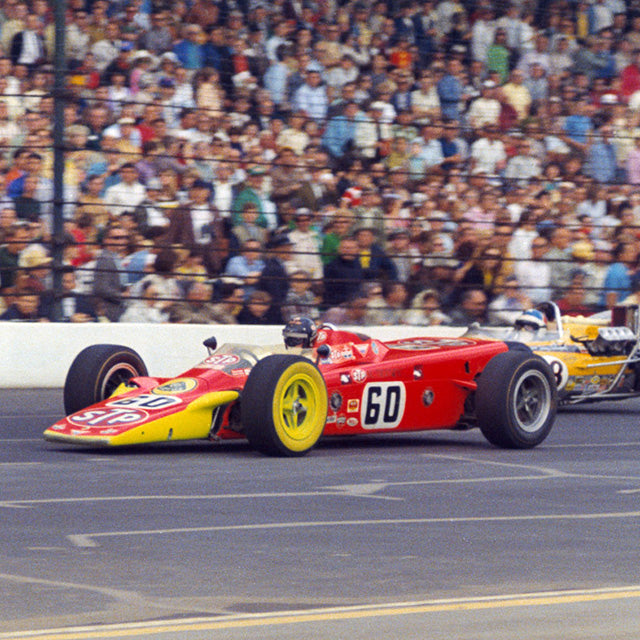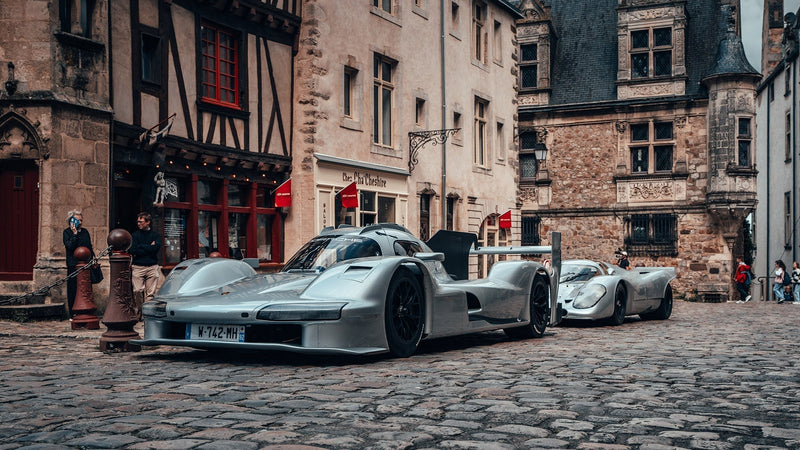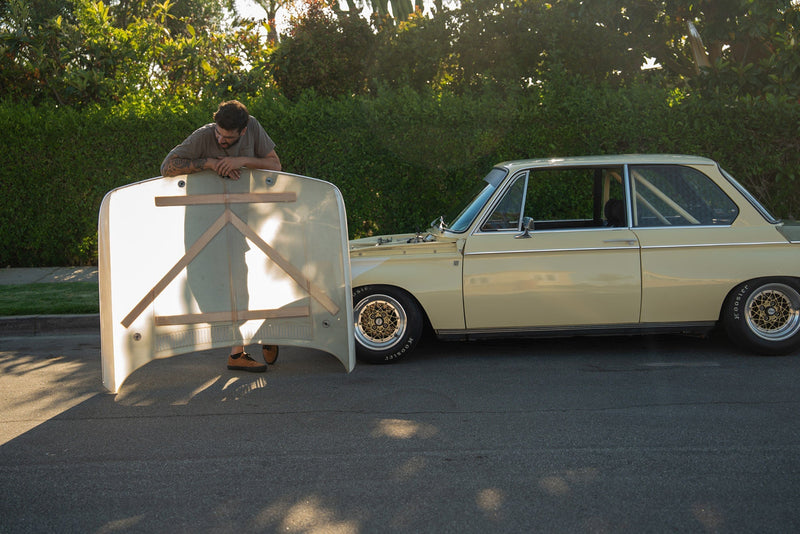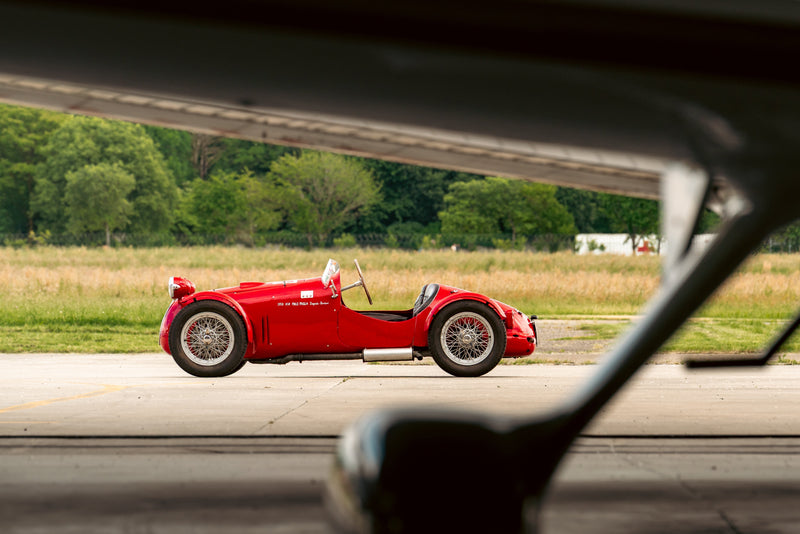As you read yesterday, the early part of turbine car history was filled with innovation and fleeting success. Speed record-breakers and show cars seemed to be the natural habitat for gas turbine engines, but intrepid engineers soon began to see the powerplant’s potential for other uses—including in bad guy-modified hypercars.
James Bond, your nemesis’ car has arrived.


1963 Chrysler Turbine Car
Through the gumption and brilliance of engineer George Heubner Jr. and his team, Chrysler ran a turbine car program from the '30s, in the process becoming the biggest player in the nascent technology. By 1977, the company had stopped development on turbine-powered road cars, but not before creating roughly 100 prototypes. Unlike Rover, however, development was carried out largely in secret.
The Chrysler Turbine Car was actually built and lent out to consumers, with only 9 remaining of the 55 prototypes and production models built. A beautiful, compact coupé, the body was built by Ghia, would run on tequila, sounded like a salad spinner, and was named by Jay Leno as "the most collectible American car". Easy for him to say: he bought one of the working ones directly from Chrysler.

1963 Rover-BRM
With Graham Hill and Richie Ginther at the wheel of a car that had been a BRM Grand Prix car until turned into a turbine-powered racing machine for Le Mans. With 150 horsepower and a slippery low-drag body, the team would have finished 8th overall, had the car not been classified as an experimental vehicle.
A top speed of more than 140 mph? Now we're cooking with kerosene!


1964 General Motors Firebird IV / 1969 Buick Century Cruiser
So ahead of its time that General Motors used the body for two concept cars five years apart, the Firebird IV is the closest look at what a feasible gas turbine-powered car from the General would have looked like. With rival Chrysler's loaner program for turbine vehicles well underway by 1964, GM sought to show the more practical side of this technology.
With better efficiencies at a constant speed, an autonomous highway is the ideal environment for a turbine vehicle, which is exactly what General Motors thought would "automatically" guide this car to its destination at twice the speed of conventional highways.
By the time it was repainted and promoted as a Buick, the concept gained new seats, refrigerator, television, table, onboard guidance system, and an electrically-lifting floor for its luggage compartment.


1965 Rover-BRM
Now with the lineup of Graham Hill and Jackie Stewart, the car was classified with the rest of the field and was finally eligible to compete for outright victory.
Finishing 10th overall despite numerous problems and concerns about the engine overheating, it proved promising for turbine fans but also showed that it would be a while before the technology was as efficient and powerful as conventional piston-driven engines.


1967 STP-Paxton Turbocar
Engineer Ken Wallis had an idea: enter a turbine-powered car at the Indianapolis 500. It took a year from start to finish, with money coming from the head of STP (and patron of motorsports) Andy Granatelli, but when the team showed up in 1967 the competition was left reeling.
Imagine your surprise at having to compete against an four-wheel-drive open-wheel race car with the driver sitting beside a lightweight turbine that offered 550 horsepower. A little heavier than the other cars, it was nevertheless a competent handler and had Joe Leonard and Parnelli Jones as drivers—which means the competition was going to have their work cut out for them.
At the start, Jones jumped into the lead and kept the car at the top of the timing tipi for much of the race, and between us, the Turbocar won the 1967 Indianapolis 500.
Well…it would have: had a small bearing in the transmission not failed with less than 10 laps to go. The Turbocar's chances were severely neutered soon after with rule changes and an accident that damaged one of the chassis, but it would inspire other open-wheeled racers…


1968 Lotus 56
It's not flattering to have a vehicle so closely tied to the dangers of racing turbine-powered cars, but the Lotus 56 ended up being a poster child for tragedy after rising star Mike Spence was killed at Indianapolis during testing.
When it eventually ran in the Indianapolis 500, it was clear that Colin Chapman and his team poured their immense knowledge into this car. The 56 is an early aerodynamic success and had four-wheel-drive, but with its light weight, prepared crew, and all-star drivers it was a force to contend with. Qualifying on pole for the 1968 event, the three cars entered all retired before the finish. In 1971, the team entered the revised 56B into three Formula 1 races but it could only muster a best finish of 8th.


1968 Shelby Turbine IndyCar
If there's one year that represented the high water mark for turbine race cars, it's 1968. After years of development, major companies and engineering concerns were ready to show a number of exciting developments, and Shelby was one of them.
Designed for the 1968 Indianapolis 500 along the same lines as the STP-Paxton Turbocar, the Shelby had an all-star lineup that included drivers Bruce McLaren and Denny Hulme and a GE T58 turbine that made 1,325 horsepower when unrestricted. Like the Turbocar, this Indycar was also all-wheel-drive.
The Indianapolis 500 governing body had already restricted the inlet size available to turbine cars in the wake of the Turbocar's previous year success, so the Shelby used a clever—and illegal—variable air intake to claw back some power. This wasn't discovered by the team until it was almost too late: for fear of damaging the reputation of his team and sponsors, Shelby withdrew the two-car effort before qualifying began.
https://www.youtube.com/watch?v=GAgLSy371us
1968 Howmet TX
Building parts for gas turbine engines gave the Howmet Corporation a unique "in" to building its own sports racing car. After all, winning a race would be a great way to prove the company's engineering mettle.
Sure enough, using a modified McKee Mk.9 Can-Am chassis, the small team completed the TX, which would become the only turbine-powered car to win a race. Debuting at the 24 Hours of Daytona, its wins came at smaller venues but were nevertheless impressive, proving the 350 horsepower, 65,000 rpm gas turbine had the guts to beat the Porsche 907 and Ford GT40s.
It was retired from racing after just a single season and ultimately not much development, so we'll never know how fast the TX could have been. Though its promotional abilities disappointed Howmet, the company decided that it could milk a bit more promotion out of the car and entered it into a few land speed records, setting six FIA records in the process in 1970.


1977 Chrysler LeBaron Turbine
This is the final "special" road-going Chrysler turbine car, with 104 horsepower, production-feasible engine, and slightly reworked styling. It's one of the few turbine-powered cars with Corinthian Leather, but it and the rest of the company's efforts were axed as Chrysler president Lee Iacocca asked the U.S. government for a loan in 1979.
Amazingly, it wouldn't be the end of the turbine story: the division was incorporated into Chrysler Defence, which was later acquired by a company called General Dynamics. When the U.S. government needed an advanced main battle tank, Chrysler Defence's winning proposal had a Honeywell AGT1500C multi-fuel turbine engine at its core. Horsepower? About 1,500.
You now know it as the formidable M1 Abrams.


1978 Chevrolet Corvette by Vince Granatelli
Built for a friend, Granatelli took his Indianapolis 500 know-how and stuffed it under the nose of a Corvette, creating an 880 horsepower monster that was reportedly capable of hitting 60 mph in less than 3.2 seconds.
This is all in 1978, when most "fast" cars hit 60 in 7 or less, mind you. The rest of the car was overbuilt to accommodate the demands from its Pratt & Whitney ST6N-74 gas turbine, with an all-new front subframe, massive brakes, better tires, and massive exhaust. Top speed? Apparently north of 180 mph. In the quarter mile? Around 12 seconds at 111 mph—as fast as many modern supercars.


1992 Chrysler Patriot
When Chrysler landed on its feet again, what did it do? Why, develop a secret gas turbine/flywheel electric hybrid car with which to win Le Mans.
That was the hope, of course, that the somewhat dubious "Turboencabulator" technology would eventually become viable, but this incredibly complex car had two gas turbines mated to a hybrid transmission that offered a total of more than 500 horsepower, plus an 80 horsepower overboost. A flywheel harnessed kinetic energy from braking, something that seems far-out but was actually later adopted by both Porsche and Audi in their hybrid Le Mans cars.
It's also the only turbine-powered car to appear at the White House, with former president Bill Clinton on hand in 1994 to see a technologically-advanced race car before it was retired from duty…


2006 General Motors EcoJet
When Jay Leno asks for a supercar powered by a turbine engine that had been used in helicopters, you make him a supercar with a 650 horsepower Honeywell LTS101 gas turbine engine. Built in collaboration with General Motors (Ed Welburn styled the car), Honeywell, BASF, and Alcoa, it was engineered as a fully-functioning car.
Jokes about its Windows Vista operating system aside, the hydroformed aluminum chassis and carbon-fibre-reinforced polymer bodywork houses one of the most advanced turbine cars ever made. It'll run on just about any fuel—Leno prefers refined cooking oil—while motoring down the road thanks to a C5 Corvette's 4-speed automatic transmission and an incredible display of engineering prowess from all involved.
Image sources: carstyling.ru, windingroad.com, turbinecowboy.com, oldconceptcars.com, wikipedia.org, wideopenwheel.files, pinimg.com, pinimg.com, supercompressor.com,
turbinecar.com, barrett-jackson.com, 24h-lemans.com, seriouswheels.com, supercarspecs.com, caradvice.com.au, cbsi.com




















































